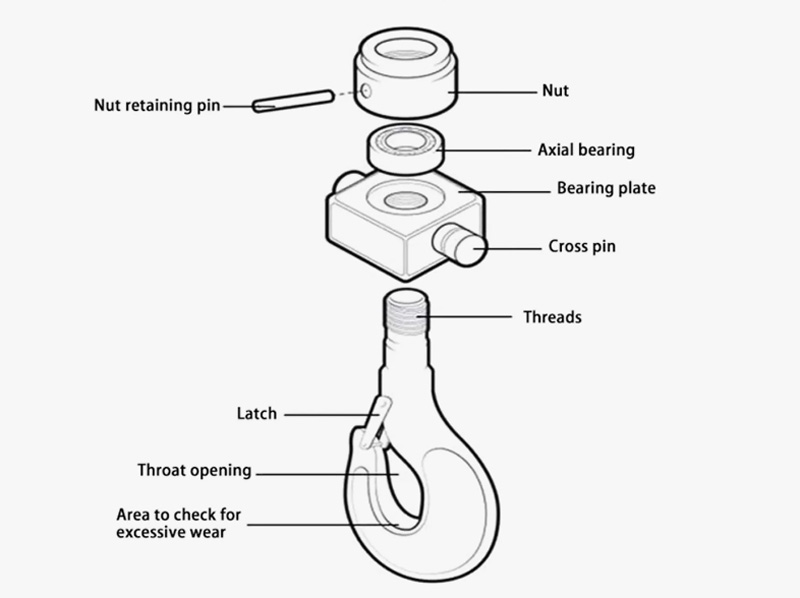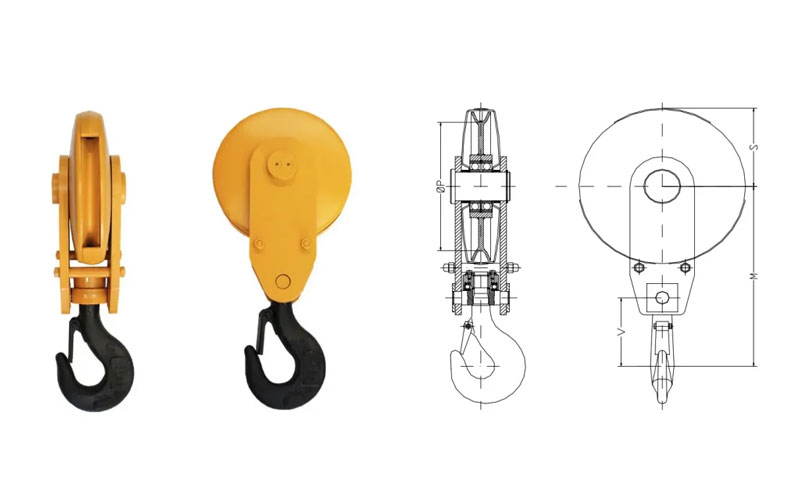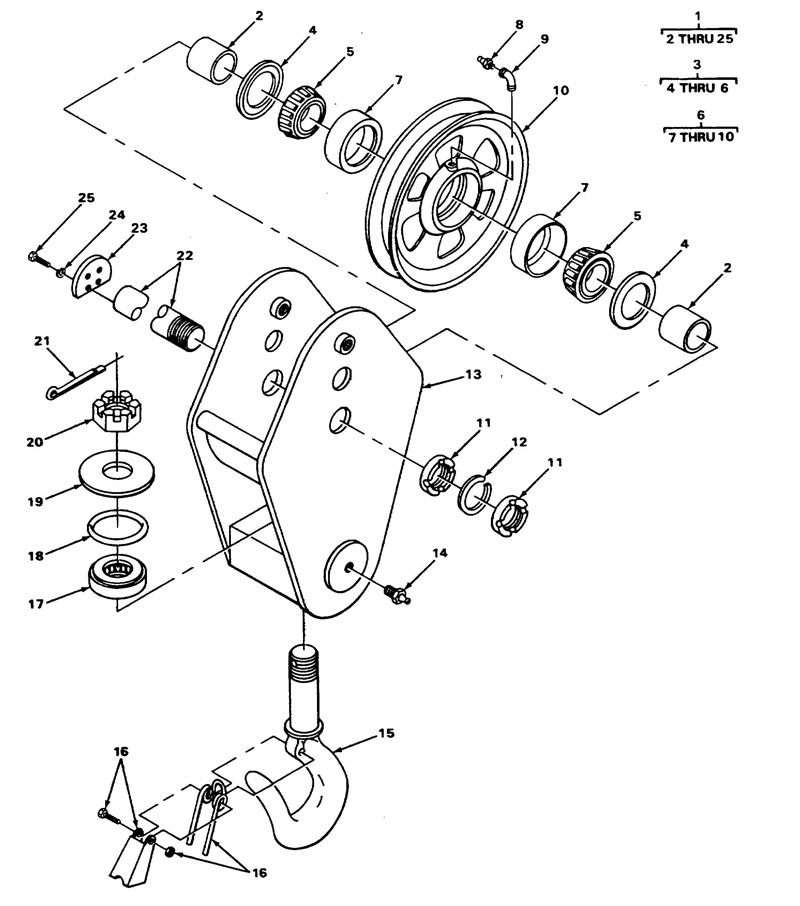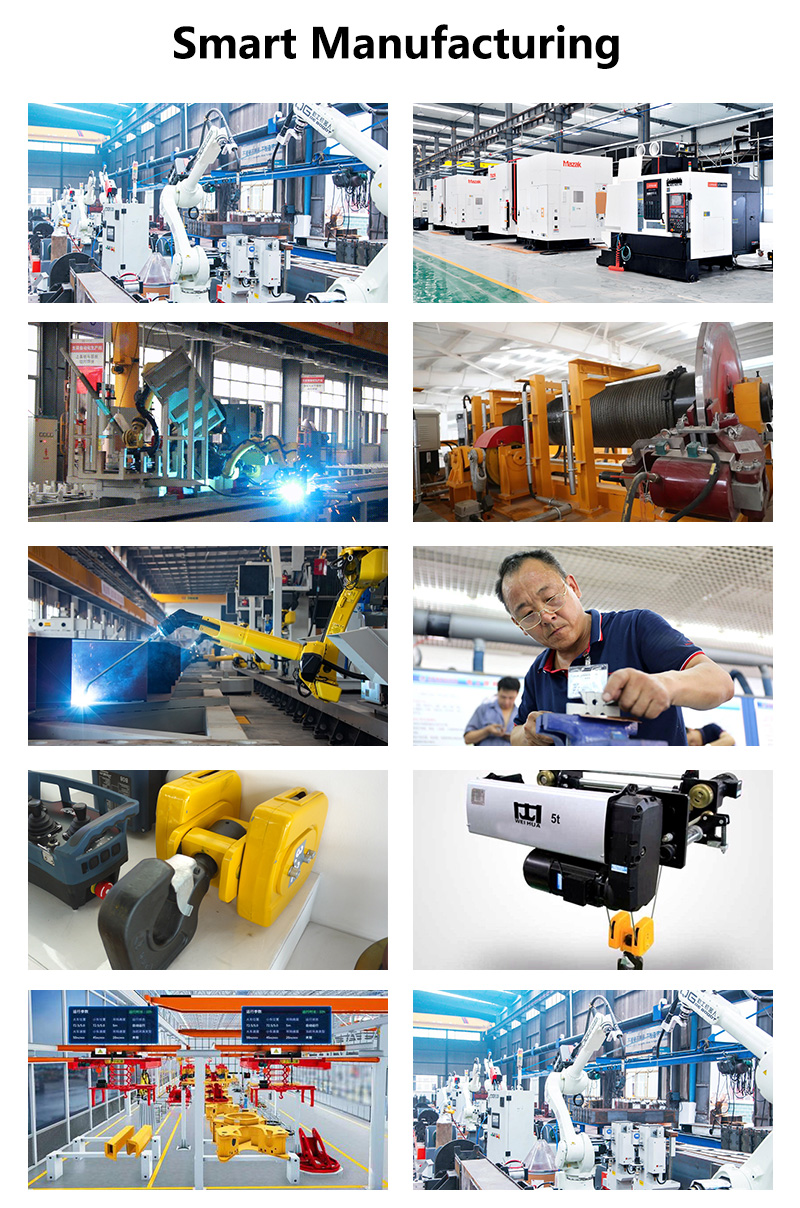When it comes to heavy lifting equipment, a كتلة ربط الرافعة is one of the most essential components that ensures safe and efficient load handling. Understanding the design and drawing details of a crane hook block is crucial for engineers, operators, and maintenance teams alike. In this blog post, we’ll explain what a ربط الرافعة وكتلة is, its typical components, how to read a crane hook block drawing, and why accurate drawings are vital in the lifting industry.

أ كتلة ربط الرافعة is an assembly that includes a crane hook, sheaves (pulleys), a block frame, bearings, and safety latches. This block connects to the wire rope or hoist chain of a crane and transmits the lifting force to the load. By incorporating multiple sheaves, the hook block reduces the tension on the wire rope, allowing heavier loads to be lifted with less effort and improved safety.
A precise crane hook block drawing will typically show all critical components and dimensions. Here are the main elements usually included:
خطاف: The main load-bearing element, usually forged from high-strength steel and fitted with a safety latch.
Sheaves: Grooved wheels guiding the wire rope and enabling mechanical advantage.
Block Frame: The housing that holds the sheaves and hook together.
Bearings and Axles: Enable smooth rotation of the sheaves.
مزلاج السلامة: Prevents the load from accidentally slipping off the hook.
Swivel Assembly (خياري): Allows the hook to rotate freely, avoiding rope twisting.
A detailed crane hook block drawing will provide dimensions for each part, material specifications, load ratings, and assembly instructions.

Reading a crane hook block drawing requires basic mechanical drawing knowledge. Here are a few tips:
1. Understand Views: Drawings often include front, side, and top views for clarity.
2. Check Dimensions: Look for overall dimensions, sheave diameters, hook throat opening, and bearing sizes.
3. Identify Load Ratings: Always verify that the hook block meets the lifting capacity requirements for your crane.
4. Material and Standards: Good drawings specify material grades and compliance with industry standards (على سبيل المثال, من, ISO).
5. Assembly Notes: Pay attention to notes about lubrication, bolt torque, and safety checks.
Precise crane hook block drawings are critical for several reasons:
1. أمان: Properly designed and manufactured blocks reduce the risk of mechanical failure.
2. صيانة: Clear drawings help technicians replace parts correctly and perform routine inspections.
3. التخصيص: Engineers can adapt hook block designs for specific applications, such as offshore lifting or high-capacity tower cranes.
4. امتثال: Manufacturers and operators must follow strict standards to meet regulatory requirements and insurance conditions.

س 1: What is a crane hook block used for?
A1: A crane hook is an assembly that connects the crane’s wire rope to the load. It includes sheaves that multiply lifting capacity, a hook to hold the load, and safety components to ensure secure lifting.
Q2: Why is a detailed crane hook block drawing important?
A2: A detailed drawing ensures that the hook block is designed, manufactured, and assembled correctly according to safety standards. It provides clear information on dimensions, مواد, and assembly, helping prevent failures and accidents.
س 3: How often should a crane hook block be inspected?
A3: Regular inspection is critical. Visual checks should be done before each use, and a thorough inspection—checking for wear, تشققات, or deformation—should be done periodically according to the manufacturer’s guidelines and local safety regulations.
س 4: Can I customize a crane hook block design?
A4: نعم. Many manufacturers offer custom crane hook designed for specific lifting conditions, قدرات التحميل, and operational environments. Custom drawings ensure the block meets unique project requirements.
س 5: Where can I get a crane hook block drawing?
A5: You can request a drawing from the crane or hook block manufacturer. For replacement or maintenance purposes, always refer to the original equipment drawing or consult a certified engineer to ensure compatibility and safety.

A crane hook is a small but powerful part of any crane system. Having a well-detailed crane hook block drawing is invaluable for safe design, تصنيع, installation, and maintenance. Whether you’re an engineer drafting new equipment or an operator checking your gear, always refer to accurate drawings to ensure reliable lifting operations.
Need custom crane hook blocks or professional drawings? Contact us today to get expert support for your lifting projects!


نحن نقدر ملاحظاتك! يرجى إكمال النموذج أدناه حتى نتمكن من تخصيص خدماتنا حسب احتياجاتك المحددة.

أحدث التعليقات